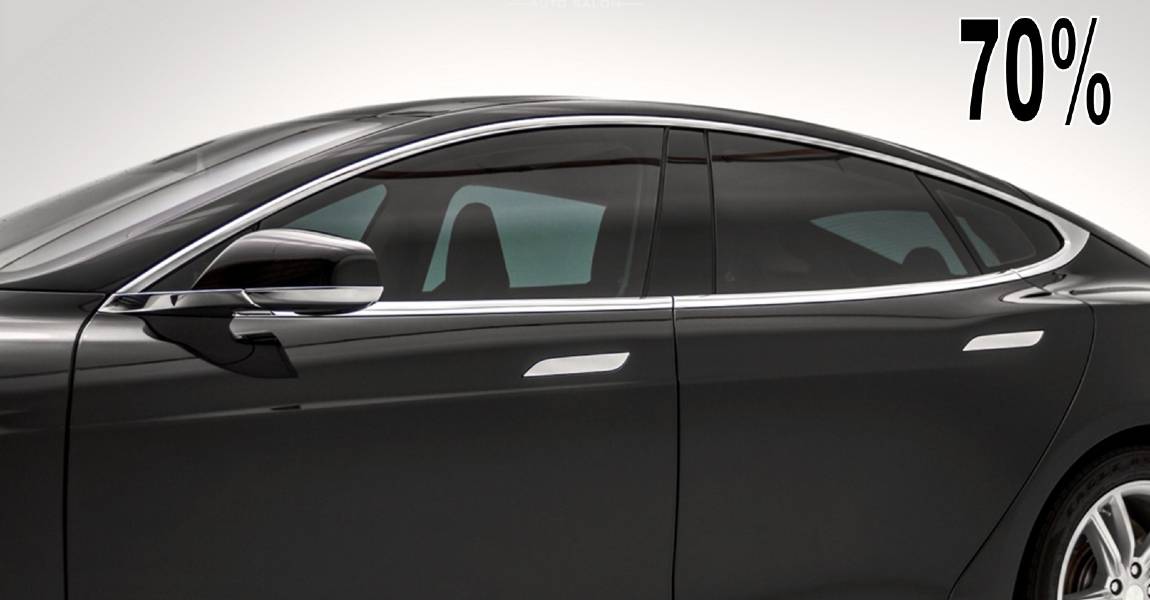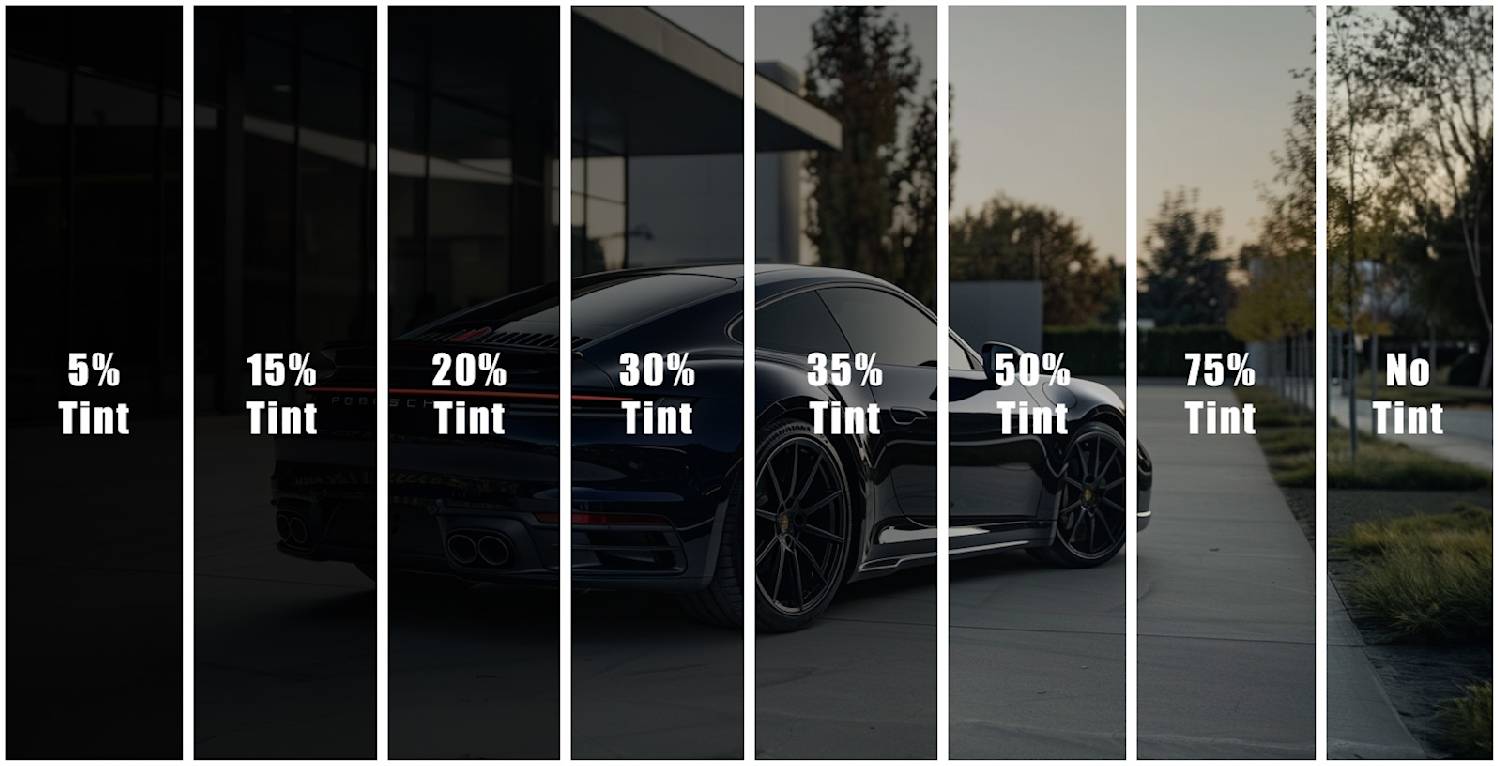Whatever You Need to Understand About Car Window Tinting for Your Car
Car home window tinting is a functional improvement for lots of automobile proprietors. It offers advantages such as enhanced comfort and power performance. Numerous tint movies cater to different needs and choices. Understanding legal policies and choosing the best color percentage is vital. The installation process and appropriate maintenance likewise play substantial roles in making sure the long life of the tint. What various other aspects should one think about before making a decision on home window tinting?
Benefits of Car Window Tinting
Although some car proprietors might forget it, car home window tinting deals numerous advantages that boost both the driving experience and the lorry's long life. Among the key advantages is the reduction of warm buildup inside the lorry, permitting for a much more comfy adventure, specifically throughout heat. This can cause reduced reliance on a/c, boosting gas efficiency.Additionally, window tinting gives protection versus damaging UV rays, which can create skin damages and discolor interior products over time. By blocking these rays, the tint aids preserve the automobile's inside and keep its resale value.Moreover, colored home windows can enhance privacy and safety and security, as they make it harder for outsiders to see inside the vehicle. This added layer of security can discourage potential theft. Generally, vehicle home window tinting functions as a practical investment that adds to the car and both comfort's total wellness.
Kinds Of Home Window Color Films
When thinking about car home window tinting, lorry owners encounter a range of window tint movies, each made to meet details needs and choices. The initial classification is colored window film, which gives a standard level of privacy and UV security while being affordable. Next off, metalized films include tiny metallic bits, reflecting warmth and improving resilience, although they might hinder digital signals.Ceramic films are one more option, recognized for their remarkable warmth denial and clarity, supplying high performance without signal disturbance. Ultimately, crossbreed films incorporate attributes of dyed and metalized films, striking an equilibrium in between price and performance. Each kind of home window color movie offers unique benefits, allowing lorry owners to select based upon their certain requirements, such as warm control, budget plan, and look considerations. Comprehending these choices is essential for making an informed decision regarding automobile window tinting.
Recognizing Legal Rules
When thinking about vehicle home window tinting, it is crucial to understand the legal regulations that govern tint darkness limits and windshield color needs. These laws can differ substantially from state to state, affecting what is acceptable for car owners. Familiarizing oneself with these regulations warranties compliance and helps stay clear of possible penalties or charges.
Tint Darkness Restrictions
Just how can automobile proprietors ensure they continue to be compliant with regional laws regarding home window tinting? Comprehending tint darkness limits is necessary. Each state has details regulations that determine the permitted degrees of darkness for window colors, which are determined by Visible Light Transmission (VLT) percentages. Typically, front-side home windows must enable a higher portion of light compared to back windows. Some states might permit only 30% VLT for front windows, while the back windows might be allowed to have significantly darker colors. To ensure conformity, car proprietors need to seek advice from state guidelines or local regulation enforcement for precise details. Furthermore, licensed tinting professionals can supply understandings regarding lawful restrictions, making sure that vehicle owners make notified choices.
Windshield Tint Rules

State-Specific Legislations
Steering through the landscape of state-specific legislations relating to automobile home window tinting requires mindful interest to detail, as laws can differ greatly from one state to an additional. Each state has its own set of policies governing allowed tint percentages, kinds of materials, and placement on vehicle home windows. Some states allow darker colors on rear windows while banning them on front windows, while others have more stringent overall limitations (automotive window tinting clinton township). Furthermore, specific states mandate making use of specific products or call for accreditation from installers. Failure to abide by these laws can result in penalties or the need to eliminate non-compliant tint. Consequently, automobile proprietors should consult their state's Department of Electric motor Autos or pertinent authority to assure adherence to neighborhood laws
Selecting the Right Tint Percentage
When selecting the appropriate color percent for a vehicle's windows, one must think about different variables that affect both appearances and functionality. Tint percentages usually range from 5% to 70%, with lower percents giving darker tones and greater percents enabling a lot more light in. A darker color can improve privacy and decrease glare, while a lighter tint can keep exposure and adhere to lawful restrictions.Furthermore, individual choice plays a substantial role in this decision. Some people might like the smooth appearance of darker colors, while others might favor an extra open, ventilated feel. Additionally, the lorry's objective should be considered; for circumstances, those using their lorries for commercial objectives could select lighter colors to maintain a professional look.Ultimately, the appropriate tint percentage equilibriums individual design, comfort, and adherence to neighborhood guidelines, making sure a gratifying tinting experience.
The Installation Refine
An effective setup of home window tint calls for cautious interest to information and the right tools. The process commonly begins with complete cleansing of the home windows to remove dust, debris, and dirt, assuring correct attachment of the film. Once the surface areas are prepared, the installer steps and cuts the color film to fit each window accurately.Next, the film is placed on the glass, usually using a service to assist in easy modification and protect against air bubbles. Heat is sometimes applied to the movie to adapt it to the window's contours, enhancing its look and long life. After confirming a seamless fit, the installer carefully trims any kind of excess movie along the edges.Finally, the installer look for flaws and confirms all edges are secure. This precise technique is vital not just for aesthetics but additionally for attaining the desired performance advantages of window tinting, such as UV defense and heat reduction.
Upkeep and Look After Tinted Windows
Proper upkeep and care are important for protecting the integrity of tinted windows. Efficient cleaning strategies, the evasion of damaging chemicals, and regular inspections for damages play crucial roles in making certain durability. By following these standards, car proprietors can preserve the visual and practical advantages of their window color.
Cleaning Up Strategies for Tint
Preserving the clarity and durability of colored windows calls for particular cleansing techniques customized to the movie's fragile surface area. It is essential to make use of a soft microfiber towel to prevent scratching the color while cleaning. A gentle remedy of water and a few decreases of light dish soap can successfully remove dust and grime. It is a good idea to use the cleaning service to the towel, instead of directly onto the tinted surface area, to prevent moisture from permeating right into the edges of the film. Mild, round activities must be employed to clean up the home windows completely. Normal cleaning aids preserve visibility and prevents build-up, guaranteeing that the tint remains in prime problem with time. Adhering to these methods will certainly expand the life of colored windows.
Staying Clear Of Hazardous Chemicals
Although lots of home cleansing products work on various surfaces, they can present considerable dangers to colored windows. Chemicals such as ammonia, bleach, and particular solvents can weaken the color movie, causing discoloration and peeling. Individuals should choose pH-balanced cleaners especially made for colored windows. Additionally, making use of soft microfiber towels will certainly assist protect against scratches and preserve the tint's integrity. Normal official source maintenance is vital; subsequently, preventing extreme scrubbing up or abrasive products is crucial. It is a good idea to read item labels thoroughly to validate compatibility with home window colors. By selecting the appropriate cleansing solutions and devices, car proprietors can protect the look and performance of their tinted home windows, guaranteeing a much longer life expectancy and optimal performance.
Inspecting for Damages
Routine examinations of tinted home windows are essential for determining any type of indications of damage that might jeopardize their performance and appearance. Proprietors should try to find bubbling, peeling, or staining, as these concerns can suggest inadequate installation or exposure to harmful aspects. It is suggested to check the edges of the movie where peeling off might begin and evaluate for any kind of scrapes that could influence exposure. Furthermore, ultraviolet (UV) rays can trigger the color to break down over time, so monitoring its performance in blocking UV light is important. If any kind of damages is identified, prompt activity must be taken, which might consist of specialist repair work or replacement. Preserving colored home windows not only enhances looks yet also guarantees continued security for both special info travelers and the car inside.
Usual Misconceptions Concerning Window Tinting
What misunderstandings border window tinting for automobiles? Several people think that all home window tints are unlawful, however guidelines vary by state, allowing for specific degrees of tinting. Another common misconception is that darker colors obstruct even more warm; nonetheless, the efficiency of window movies relies on their modern technology instead than darkness. Some people likewise believe that window tinting is only for aesthetic appeals, ignoring its benefits, such as UV defense and glow reduction. In addition, several presume that window tinting will certainly harm their lorry's glass, however skillfully applied colors can really enhance glass resilience. There is an idea that window tints obstruct exposure, yet top quality films are designed to keep clear sightlines while offering personal privacy. Comprehending these misconceptions assists customers make informed choices regarding home window tinting, ensuring they appreciate the full array of benefits it provides.
Regularly Asked Questions
The Length Of Time Does Window Tinting Typically Last?
The long life of window tinting varies based upon factors such as installment high quality, movie kind, and environmental problems. Commonly, top notch color can last anywhere from 5 to 10 years prior to needing replacement or reapplication.
Can I Eliminate Home Window Color Myself?
Removing window tint oneself is possible, though it might be tough. Individuals ought to utilize a warm resource and adhesive remover to reduce the procedure, but care is suggested to prevent damaging the lorry's glass or inside.
What Tools Are Needed for DIY Window Tinting?

Will Home Window Tinting Damage My Cars and truck's Glass?
Window tinting, when applied correctly, generally does not damage a vehicle's glass. Nevertheless, inappropriate installment or low-grade movies may result in peeling off, bubbling, or damaging, potentially compromising the honesty of the glass gradually.
Can Tinted Windows Influence My Car's Resale Value?
The effect of tinted home windows on a vehicle's resale worth can vary. While some purchasers appreciate the added privacy and UV security, others may see it as a possible problem, possibly impacting resale favorably or negatively. When taking into consideration automobile home window tinting, car owners encounter a variety of home window color movies, each developed to satisfy specific requirements and choices. When thinking about vehicle window tinting, it is critical to understand wikipedia reference the legal laws that govern tint darkness limits and windscreen tint needs. Typically, front-side windows need to enable a greater portion of light compared to rear windows. Some states may enable just 30% VLT for front home windows, while the back home windows might be permitted to have especially darker colors. Some states allow darker tints on back windows while forbiding them on front windows, while others have more stringent general limitations.